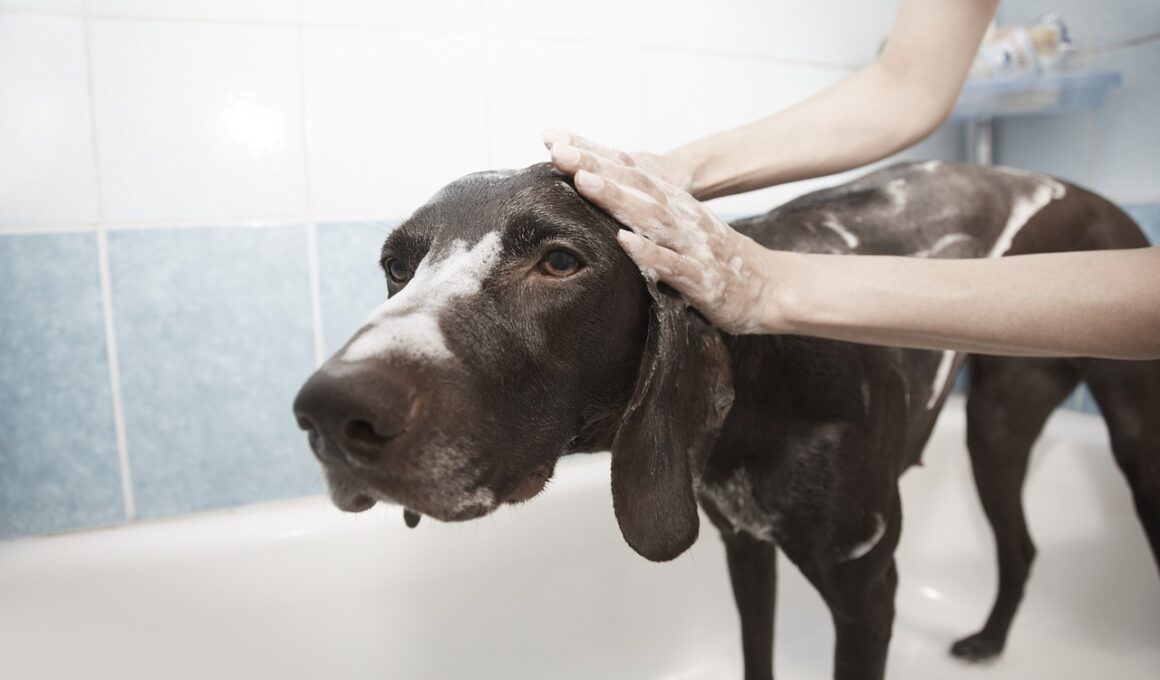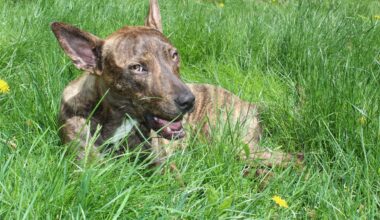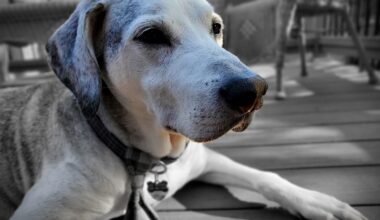The Impact of Ambient Temperature on the Dam and Puppies Post-Whelping
The ambient temperature significantly affects the health and wellbeing of both the dam and her puppies in the crucial post-whelping phase. After birth, maintaining a stable environment is essential. Extreme temperatures can lead to stress and health complications for the dam. Inadequate warmth can cause hypothermia in newborn puppies, while excessive heat can induce heat exhaustion in the mother. It is critical to monitor the room temperature closely, aiming for a range of 70 to 80 degrees Fahrenheit. This temperature promotes optimal nursing conditions and keeps both the dam and her pups comfortable. Additionally, caregivers must provide adequate bedding and insulation in the whelping area. Using heat lamps and blankets can help create a warm, secure environment. Regularly observe both the dam and her puppies for signs of discomfort or distress. Ensuring adequate hydration is also crucial, as heat can lead to dehydration. Always have fresh water available to the dam. Consulting a veterinarian about specific temperatures and conditions suited for the breed can also provide valuable insight, ensuring a smooth recovery and growth period for both dam and puppies.
The first week after whelping is particularly critical for the dam and puppies. During this period, the puppies rely entirely on their mother’s milk for nutrition and warmth. Monitoring the ambient temperature is vital as it directly influences the dam’s milk production and the puppies’ overall health. A stable, warm environment encourages breastfeeding behavior, resulting in more frequent and effective feeding sessions. Cold temperatures can cause the dam to become lethargic, reducing her appetite and milk output. Conversely, high temperatures may stress the dam, leading to reduced care for her pups. To help them thrive, ensure that the whelping area is well-ventilated while maintaining warmth. Avoid drafts and direct sunlight on the dam and puppies, as excess heat can lead to overheating. Providing ample space for the dam to move freely without feeling trapped is beneficial. Additionally, keep a close watch for any signs of distress in both the dam and her newborns. Prompt intervention can prevent complications arising from unfavorable temperature conditions. Engaging a veterinarian for advice specific to the breed and environment can ensure both the dam and puppies remain healthy during this sensitive period.
Signs of Temperature Stress in Dam and Puppies
Understanding the signs of temperature-related stress is essential for anyone involved in dog breeding. Common signals in the dam include panting, restlessness, and reduced interaction with her puppies. If the dam seeks cooler areas or shows decreased appetite, she may be experiencing overheating. Conversely, shivering, seeking warmth, and lethargy are indicators of being too cold. For puppies, lethargy, crying, or clustering together excessively can signify discomfort due to temperature changes. It’s critical to adjust the environment based on these signs, ensuring both the dam and her puppies are comfortable. Close observation during the first few days after whelping ensures early detection of any issues. Additionally, using a thermometer to keep track of the ambient temperature can offer peace of mind. If you notice the dam showing signs of distress, immediately assess her surroundings and make necessary changes. For puppies, ensure that they are nursing adequately; if they are cold, consider using warming pads or blankets. Adequate temperature management contributes significantly to the development of the puppies and helps the dam recover post-whelping.
Caring for the dam’s nutritional needs is equally important as managing the ambient temperature. Post-whelping, the dam requires significantly more calories to produce milk and maintain her health. A balanced diet should include high-quality proteins, fats, vitamins, and minerals to support her recovery and milk production. Ensuring she remains hydrated is also essential, as water helps improve milk quality. Monitor her food intake closely, and adjust accordingly to meet her energy needs. It’s advisable to feed her smaller, more frequent meals to aid digestion. Adding wet food to her diet can encourage her to eat more, especially if she is feeling stressed or picky. Consulting with a veterinarian to formulate a specialized diet based on her breed and health can provide guidance. Along with nutrition, creating a calm environment will help her relax and recover. The right temperature combined with proper nutrition can lead to a quick recovery for the dam, ensuring she remains a healthy caregiver. Consequently, healthy feeding habits foster strong, thriving puppies that are well-adjusted and receiving the critical nutrients required for growth.
Creating an Ideal Whelping Environment
Establishing an ideal whelping environment is vital for the health of the dam and her puppies. This environment should be warm, quiet, and free from disruptions. To create optimal conditions, select a well-insulated area away from foot traffic and noise. Soft bedding will ensure comfort, minimizing stress for the dam. Consider utilizing whelping boxes that offer a secure space for the dam to feel safe and relaxed. Incorporating additional heat sources, such as heating pads, can provide extra warmth if necessary. These heat sources should be easy to adjust and safe from potential hazards. Regularly monitoring the temperature within the box will help maintain stability. Avoid exposing the puppies directly to heating elements; instead, create a warm zone within their immediate area. Furthermore, ensure that the ventilation system is functional, as stale air can be harmful. Routine cleaning of the area is essential to reduce the risk of infection. A well-cared-for environment enhances the dam’s wellbeing and promotes healthy development for the puppies during this sensitive transitional phase.
Vaccination and veterinary care should be prioritized during the post-whelping period. For the dam, ensuring she is up-to-date on vaccinations before pregnancy helps protect her puppies from infectious diseases. Schedule a veterinary check-up to assess both the dam and her newborns for any issues. During this appointment, the veterinarian will evaluate the dam’s recovery and provide necessary vaccinations or treatments. Puppies should also receive their vet check within the first few weeks to monitor their growth and health. Vaccination schedules typically start around six to eight weeks of age. It’s essential not only to focus on physical health but also to ensure the dam is mentally supported during this time. Providing her with social interaction can significantly benefit her mood. A healthy psyche can lead to better care for her pups and allow her to adapt positively to motherhood. Additionally, keeping a close watch on the dam’s behaviors and health during this period ensures prompt intervention if any issues arise. This collective approach will significantly impact the overall wellbeing of both the dam and her puppies.
Conclusion: Ensuring Wellbeing Post-Whelping
In conclusion, managing ambient temperature during the post-whelping period is foundational to the health of both dam and puppies. Establishing a comfortable environment ensures optimal nursing, adequate nutrition, and overall wellbeing. Preventing temperature extremes, while providing a stress-free environment, can lead to quick recovery from labor for the dam. Additionally, monitoring the dam’s health, adapting her diet, and ensuring prompt veterinary care is important for a holistic approach to post-whelping. The success of the whelping process greatly relies on attention to environmental factors and caregiver support. Observing body language and behavioral signals in both dam and puppies allows for timely adjustments to their conditions, safeguarding their health. By fostering a supportive environment, breeders can enhance the experience for both mother and her young. Taking proactive steps in temperature management, nutrition, and healthcare can significantly impact the long-term health of the puppies. The combination of these practices ensures a thriving litter and assists the dam in transitioning into her new role. Ultimately, creating a balanced post-whelping environment can guarantee healthy and happy dogs.
As a dog breeder, your responsibility extends beyond just facilitating whelping. It encompasses ensuring that both the dam and her puppies receive all necessary support during their crucial early life stages. By considering ambient conditions, nutrition, and healthcare effectively, you are better equipped to foster a nurturing environment. Awareness of temperature impact can lead to a thriving, vigorous litter while easing the dam’s recovery process. Ultimately, the post-whelping phase sets the foundation for the rest of their lives, making it a significant period that can influence their growth and development positively.





